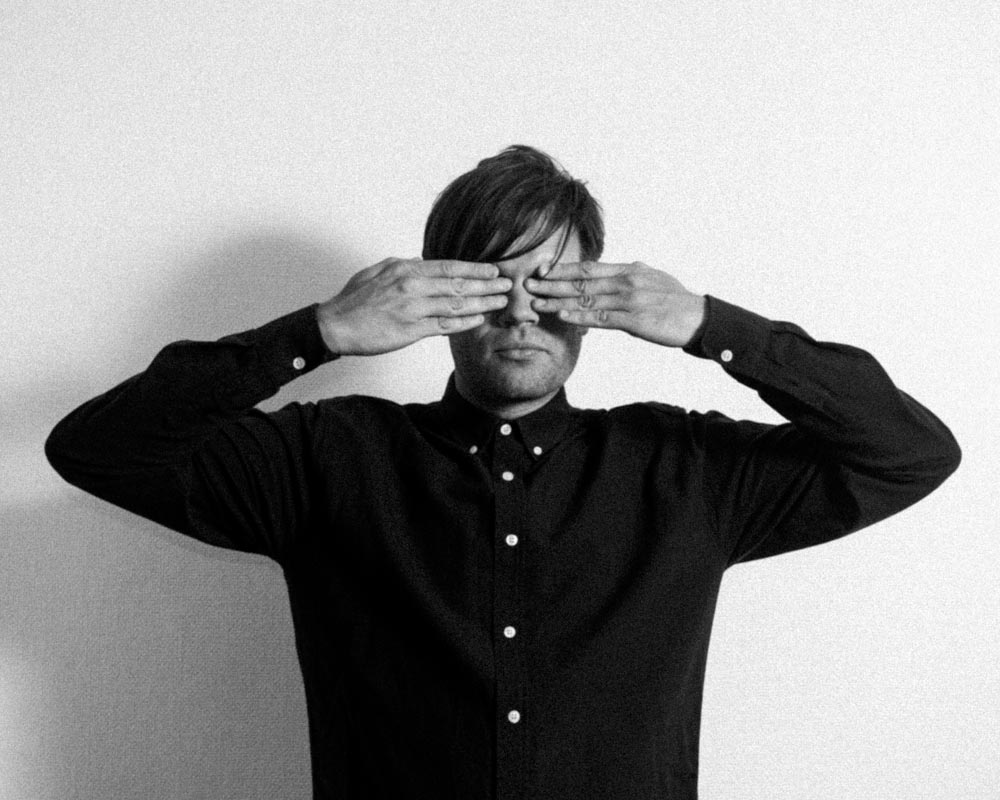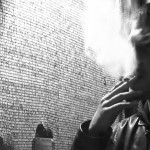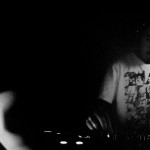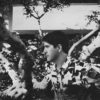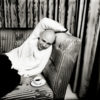Anders Trentemøller likes it lonely sometimes, likes barricading himself in a waterfront studio for months at a time—or in the case of 2013’s Lost LP, more than a year—until he’s ready to share his work with the rest of the world. The trouble with that is how different our relationship to a record is when we’re not deeply invested in it. To Trentemøller, it totally makes sense that his last album started with a song that wouldn’t sound out of place in a Low concert (right down to the glacial pacing and Mimi Parker’s devastating lead vocals) and ended with a synth-buffered drone piece, with bits of blissful electro (“River of Life”), shadow-chased club beats (“Deceive”) and artful pop (“Never Stop Running”) caught somewhere in between. And yet many people still pit the producer’s new pieces against the melancholic dance music of his career-defining debut, The Last Resort.
“That is definitely something I struggle with,” admits Trentemøller, speaking from Copenhagen soon after the first leg of the Lost tour. “For me, everything makes sense on the album because I’ve been listening to it for so many hours. It’s easy to take that for granted sometimes.”
On the same account, it’s easy to skim a record on Spotify and arrive at a snap judgment before the thing’s even over. That’s why we asked Trentemøller to discuss his recent career moves in depth and pair it all with an exclusive mix—to show where all these divergent ideas come from, and how they’re reflected in his record collection, which runs the range from early Cure material to a school band that cut a song with silverware in their cafeteria…
Needle Exchange 144 – Trentemøller:
Angie Hester – Bump Step
Central High School Cafeteria Band – First Rhapsody For Knifes, Forks and Spoons
Tame Impala – Lucidity (Pilooski Remix)
The Cure – The Drowning Man
Trentemøller – Gravity (Pinkunoizu Remix)
Pinkunoizu – Tin Can Valley
The Four Instants – Bogatini
Bikinis – Crazy Vibrations
Kid Congo and the Pink Monkey Birds – Lord Bloodbathington
Beach Fossils – The Horse
Dead Skeletons – Ódauðleg Orð (Museum)
What’s your live show like these days? It must be hard to recreate the new record since it has so many guest vocalists.
Marie Fisker is the only vocalist I bring live because it’s quite impossible otherwise. The big challenge for us is trying to get all of those tunes ready for her to sing, to make them Marie’s songs, so to speak. It’s a little like remixing your own stuff for the stage and building it all up around her voice. I didn’t want her to copy what the vocalists sing; I want her to feel they are her songs, which is a lot of work. She puts so much energy into it.
What’s been her relationship to this project over the years?
She also played with me on the last world tour and sang on one of my old albums. We also share the same studio—hers is right next to mine—so it’s easy to just knock on her door.
Who else is in your live band?
We have a drummer, two guitar players, and sometimes our roadie plays bass. It is quite funny because we needed more of a punk bass on two tracks and he ended up being onstage for six tunes.
That’s a lot of pressure on him since the bass anchors a lot of the tracks on the new album.
Yeah. He actually has a fantastic voice and his own band too, so he’s used to being onstage. It can be tough for him to deal with the bass and all of the backline stuff, so I may have to find another roadie soon [laughs].
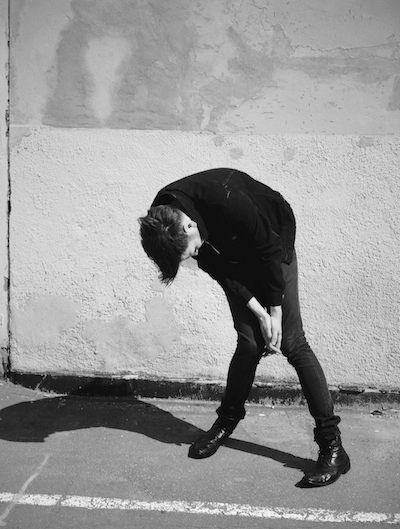
Do you feel like you’ve come full circle with the beginning of your career, since you played in bands in the ’90s before you became a producer?
Yeah, and that also came out of the need for me to play really physical instruments again. At one point, I was spending all of my time in front of the computer, so I really missed playing instruments. I started by playing the keyboard more live, and then it got more band-like from there. In the studio, it’s still only me writing—very isolated—but as soon as I finish an album, the band comes in and we try to find my sound live.
But you prefer working in solitude first?
That’s what I still like I do because I like to have full control over the songwriting and the production. Doing this album, I was alone for 12 to 14 months, so it was a relief to finally get people back in the studio and get feedback from them. It’s a nice contrast.
How did your band feel about the new record once they heard it?
It seems like they liked it. Since I have a background as a musician, it’s easy for me to go to the drums and play the pattern I want. And I can also grab the guitar and play some basic stuff. The first single, “Never Stop Running,” was very difficult for us as a band. It has a very electronic, downtempo feel—nearly half-beats—which sounded weird at first. I think we tried four or five different versions, then I took the tempo up with the drums and guitar player. It became a new track with the same harmonies and melodies. So sometimes it’s really easy, and other times, it takes a lot of rehearsing for us to find something we’re satisfied with.
The songs are very much living things then.
It’s funny because I also heard a recording of our first live performance—when we warmed up for Depeche Mode—and I was surprised by how much everything changed without me noticing it. We all get more and more used to our parts, and figure out how to give space to each other as musicians. That is something you can only figure out live, changing a little bit each night, hopefully for the better.
The vocalists on this album seem like very personal choices. It’s not like a label pushed you to use any of them.
When I started doing this album, I wanted to make it instrumental actually, but very early in the writing process, I wrote some melodies that demanded human vocals. Like the opening song, “The Dream,” was written in my apartment. One morning, I came up with these chord progressions on my Wurlitzer and I thought Mimi Parker would fit the song well. I was kinda in a Low mood, you know? So I definitely heard her voice and tried to incorporate that into the melodies. I contacted her much later, which was quite nerve-wrecking. Luckily she was up for it. Maybe she could tell that the song was written specifically for her. Most of the songs on the album were written that way—before [the singers] actually knew about them.
The other nice thing is you don’t sound like you’re trying to simply replicate how people sound in their own band. Maybe not with the Low track, but like with Sune [Rose Wagner].
Well I was in that Low state of mind when I was wrote that, so it very much ended up in that universe, but I really wanted Sune’s voice to do something different than the Raveonettes. Less the ’60s surf, indie rock stuff. I always wanted to hear his voice on more of a clubby, electronic thing. Which was fun for him. It worked even though it was so different. Me and Sune are good friends so we’d talked about working together before; this just seemed like the perfect time for it.
Tell me a little bit about Ghost Society and Marie Fisker, since they’re two of the artists on your album less people have heard of.
It’s a boy and girl who live in Brooklyn now, although they’re from Copenhagen. They released one album a few years ago that I really liked. It has that British ’90s indie sound—a little bit of the Jesus and Mary Chain, Ride and Slowdive. A little retro but with some electronic elements also. Marie Fisker is a Danish singer. We’ve been jamming and playing together for many years. Copenhagen is such a little city, so people are often playing together in different bands.
How would you describe the Copenhagen scene today?
About 10 years ago, the only music that came out of Denmark was that cartoon pop band Aqua. But then something happened about five years ago, where local Danish bands stopped trying to sound like their idols. Ten years ago, everyone wanted to sound like Blur, Oasis or Nirvana, which was quite boring. But something changed. Maybe we got more secure with that Nordic sound, but over the last two or three years, many Danish artists have started to get recognition outside Denmark. Now people are focusing on that Nordic thing, especially since we have that world renowned restaurant Nomad here. A lot of these new bands have a Nordic tone to them. They’re a little dark and melancholic.
Have you always felt like an outsider in the local music scene then?
Yeah. Because I started playing in indie bands, but then I started playing electronic music, so I never felt 100-percent part of any specific scene. It was always me having one leg in both scenes. Which suited me quite well. I like to not think about genres or styles; I’d rather focus on making good quality music. If people ask me how the electronic scene has changed here, I’m honestly not that up to date on it. I kinda just do my own thing and try to be as open-minded as possible.
Is that one of the reasons why you’ve stayed in Copenhagen—to avoid being a part of a clear dance scene, like the one in Berlin?
I never felt that my music should belong to one specific place, and certainly Berlin is much more electronic-oriented than here. One of the cities I’ve thought about moving to is New York. I love a lot of the music coming from there—whether it’s the Velvet Underground, Talking Heads or LCD Soundsystem—but Copenhagen is a fine city for me. Since we travel quite a lot with the band, I like to have some quietness and space around me, which is possible here.
“I like to be in my own world, so to speak”
What are some records you’ve listened to a lot over the last couple years?
Maybe people can hear it on the track “Still on Fire,” but an artist like Soft Moon has really inspired me. I can hear that he’s been listening to many of the same bands that have inspired me, like Joy Division and early Cure stuff. I also listened to Wild Nothing a lot before I started working on this album. And a band called DIIV.
Are you getting paid by Captured Tracks to endorse them?
[Laughs] I never thought of it like that, but I guess that’s true. That label has a lot of artists that trigger my tastes. The beautiful thing is listening to artists over time, and then suddenly these new worlds open.
People seem to be either really into your new record or to have not gotten it at all for that reason—because they didn’t let it truly sink in.
People also don’t listen to albums the same way anymore. This kind of music takes more time to get into. Maybe that makes me sound old-fashioned but…
Well I don’t think it’s that these songs aren’t accessible. It’s just that people need to give them a little more attention.
That’s why I spent a lot of time figuring out the [sequencing]—what should be first, in the middle, and at the end. The other challenge was figuring out how to make all these vocalists work. It shouldn’t sound like a pure feature album; it should sound like a Trentemøller album. Hopefully it has a natural flow.
Since you wrote most of the music before you approached the vocalists, did you already have the lyrics written out as well?
I’m very, very bad at writing lyrics. My main focus is definitely writing melodies and doing all the production. And on top of that, I also wanted to sing their own lyrics. You get the purest result that way. The only thing I asked them was to be as abstract as possible because I really don’t like if a lyric is a narrative story, more A to B. I like something that’s a little more open for the listener. Luckily all those artists are from that school, so it wasn’t a problem.
Did anyone surprise you by writing lyrics that matched exactly what you were going for with the music?
Yeah. I think the hardest song was “Never Stop Running.” Jonny [Pierce] and I worked back and forth on that track for quite a long time. The track with Mimi Parker was quite the opposite. She did this really beautiful vocal on top of the music, sent it to me and we were both happy with it. But maybe that’s because that track already had a special Low flavor to it, whereas with “Never Stop Running,” I didn’t want Jonny to sing in that Drums way.
What non-musical things inspired the mood of this album?
Mostly daily life things. It could just be walking; taking a long walk by the beach during the wintertime can be really beautiful and inspiring. Or if something goes wrong with my love life, that also helps.
What part of Copenhagen is your studio in?
My studio and house is near the airport, which is near the waterfront. It’s a nice place, but also a bit lonely. Which is great for me because as we talked about earlier, too much city life stresses me out during the writing process. I like to be in my own world, so to speak. This quietness—and the sounds of nature—can be very inspiring.
Well the best ideas often come from when you’re not thinking about music at all.
Or when you’re bored, if you’re lucky.

Are you taking a break from writing music now then?
After doing this [first] European tour, I got hungry to get back in the studio. Talking about my music made me want to create again. So I was in the studio for a few hours today, but I don’t want it to get where it’s like music, music, music all the time.
Has touring these songs made you realize you want to explore a certain sound further on your next record?
I love how music can be this universal language; sometimes lyrics can dictate too much about what the music is about. When I started doing music, it was purely instrumental. I’d like to do that again, while still having two or three vocal tracks on an album, maybe with only one vocalist to get a pure vocal sound on it.
Do you still feel like you’re working in the shadow of The Last Resort since it was such a big record for you?
Not artistically or personally, but people still ask me why I’m not doing The Last Resort-type stuff again. That album was made about 10 years ago, so my life and my music has changed a lot since then. It’d be impossible to do that again since I’m inspired by totally different things now. So I’m not listening to what people want me to do. I look inside to what’s the right thing for me. That’s one of the reasons why I have my own label—so I can just do what I think is right, whether people like it or not. Hopefully people will want to still come to the concerts [laughs].
‘Lost’ is available now through Trentemøller’s In My Room imprint. He’ll be supporting the record on the road throughout 2014. Check out his current itinerary below…
Trentemøller tour dates:
2/28 Athens, Greece – Gazi Music Hall
3/4 Groningen, Netherlands – De Oosterpoort
3/5 Den Haag, Netherlands – Paard Van Troje
3/6 Frankfurt, Germany – Neue Batschkapp
3/7 Netherlands, Zeewolde – Where The Wild Things Are
3/8 Denmark, Aarhus – Voxhall
3/29 Miami, FL – Ultra Music Festival
3/31 Brooklyn, NY – Music Hall of Williamsburg
4/2 Chicago, IL – Concord Music Hall
4/5 Los Angeles, CA – The Fonda Theatre
4/6 San Francisco, CA – Mezzanine
5/31 Lyon, France – Lancien Marché De Gros
6/6 Porto, Portugal – Optimus Primavera Sound
7/4 Roskilde, Denmark – Roskilde Festival
7/5 Werchter, Belgium – Rock Werchter
7/12 Joensuu, Finland – Ilosaarirock Festival
